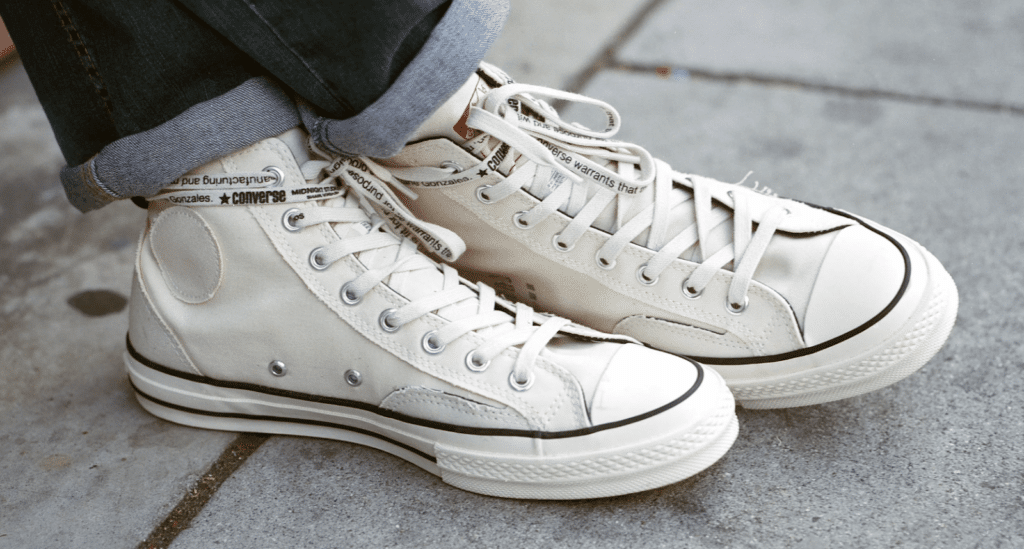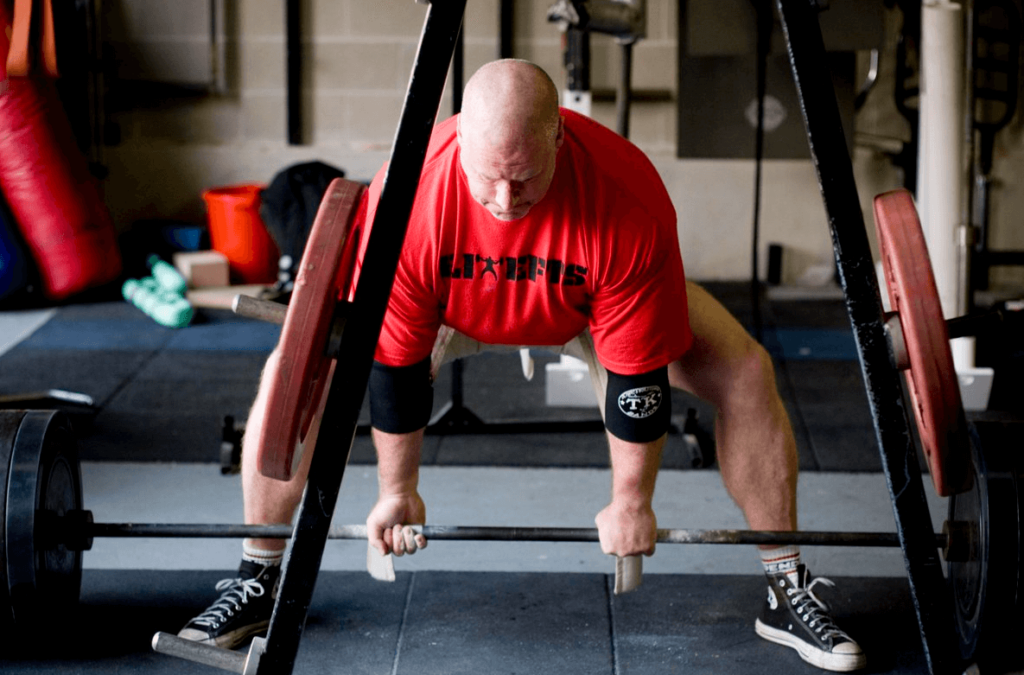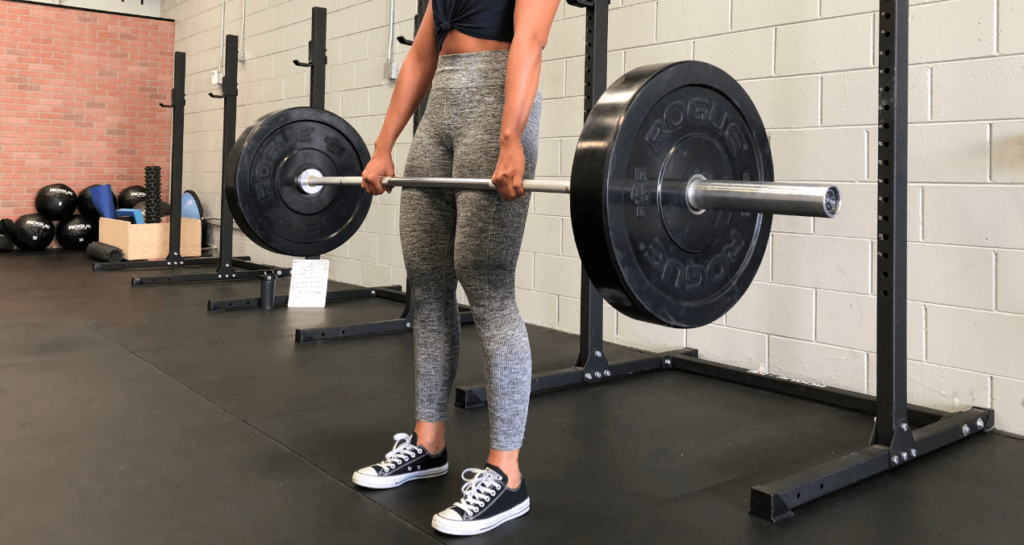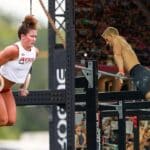When you’re performing strenuous workouts like deadlifts and squats, having proper support on your feet becomes a priority for preventing injuries. While the classic athletic shoe is a no-brainer for many gym-goers, you may be surprised to learn that a pair of Converse could offer just as much support for weightlifting.
In fact, the good old Converse brings many of the same features as a typical weightlifting shoe. They may seem more of a stylish choice than a functional one, but their innovative construction and features bring a new dimension to the weightlifting world.
Jump to:
Why Are Converse Good For Weightlifting?
Using Converse for lifting can actually be a great idea, especially for beginner or intermediate lifters just dipping their toes into the weightlifting pool. They actually hold quite a few benefits over normal shoes, mainly because of their ever-evolving and improving design. Depending on what you’re trying to do, some of these features may be more helpful than others. Let’s take a look at what sets them apart from the rest:
Flat Sole for Improved Balance, Form, and Technique
Many of the professional weightlifting shoes out there feature a flat rubber sole. This helps you stay balanced and make sure that your form remains consistent for every rep. This is a clear advantage over cushioned running shoes or hiking shoes that may have varying amounts of padding underfoot, making it difficult to properly gauge your stance.
When there’s an excess of cushioning, it can lead to your form becoming sloppy as you fatigue. Moreover, the uneven heel-to-toe drop brings inconsistency in the way you press off the ground. This can be dangerous if you’re dealing with heavy weights and performing compound exercises like heavy squats or presses. You don’t necessarily need a raised heel to make sure your form is intact, as long as you’re not stretching too far outside of your comfort zone.
Converse are incredibly consistent when it comes to shape because they eliminate the incline of the foot arch. This helps you maintain proper form and technique, so you can focus on your lifts without worrying about losing balance or altering your stance. These so-called zero-drop shoes allow for greater control and stability, which is essential when it comes to heavy lifts.
Superior Ground Reaction Force
In simple terms, ground reaction force (GRF) is the amount of force generated against the ground when you apply pressure. This is a very important metric to measure, as it can give you an indication of how much power and force you can generate when lifting. When you’re using a pair of shoes that doesn’t allow for much GRF, your performance can suffer.
Fortunately, Converse are designed to allow you to generate more force on the ground. This is thanks to their flat sole and rigid midsole that helps you push off from the ground with greater power. This can be a huge advantage for those looking to maximize their lifts and take them to the next level because their shoes are giving them the ability to generate more power.
For instance, putting on a pair of Converse with their flat sole and rigid midsole can help you rack up more power for exercises like the squat or deadlift. When your feet stay planted on the ground, you can generate more force with each rep and lift heavier weights than before. Similarly, performing high-intensity exercises like sprints or jump squats can also be less draining on your feet when wearing this kind of footwear, as the flat sole allows you to some of the load off your feet and onto the ground.

Optimal Outsole Grip for Better Stability
It’s no secret that Converse soles are made of rubber, which is known for its superior grip and improved tactile feedback. Not only are they quite reliable in terms of maintaining your stance, but they’re also quite durable and able to withstand wear and tear from heavy use.
While there’s no raised heel to help you stay in place, the rubber sole provides just enough grip and traction for you to maintain your balance. This is especially true with the newer models that feature special materials for better grip and increased durability.
This is especially useful when you’re performing fast-paced, multi-joint movements like box jumps or jump squats. The solid soles provide you with more control and greater traction, with each movement being significantly more stable than with regular shoes. This helps you maintain your balance and stay on top of your form during strenuous lifts, so you can get the most out of each rep. Every time you take ona new lift, you can be sure that your feet will stay firmly planted on the ground.
Not to mention the intricate pattern found on the bottom of the sole design, which inherently minimizes the risk of slips and falls. This is especially helpful when you’re performing exercises on wet or slippery surfaces, where a regular tread wouldn’t provide the same level of traction.
High-Top Design for Increased Ankle Support
Many weightlifters struggle with poor ankle mobility when performing certain lifts due to the limited range of motion their footwear provides. This isn’t directly related to the weight they’re lifting, but it can have a tremendous impact on their technique and form. Naturally, the connection between the foot and ankle is essential for any kind of exercise, but more so when it comes to weightlifting.
That’s where Converse comes in handy. Their high-top design offers added ankle support, giving you more control over your movements and allowing your ankles to move more freely. This is particularly beneficial for those who are prone to ankle injuries, as the extra cushioning can help protect them while they lift.
Even the low-top varieties bring better ankle stability than most other shoes. This is because the lacing system helps keep your foot in place while you’re lifting, offering better support and less slippage. While they may not go all the way up, they’re still quite durable and capable of providing the support you need.
Minimize the Risk of Back Injuries
Heavy weightlifting is undoubtedly a risky activity, and many of the injuries that befall lifters come from poor form or lack of control. Whether you’re performing deadlifts, squats, or bench presses, you need to make sure that your technique is spot-on in order to avoid any back problems. If you consistently perform at a subpar level, you can suffer from an array of issues that range from mild discomfort to more serious conditions.
With that said, Converse is an excellent choice for those looking to reduce the risk of back injuries, mainly because each pair of shoes facilitates even weight distribution across the foot. This helps you maintain your balance and stay in control when performing multi-joint movements, reducing the chance of suffering an injury due to incorrect form or poor technique. It’s not uncommon for athletes to experience lower back pain after deadlifts or some discomfort in their shoulders after squats, but a good pair of shoes can help minimize the risk of such issues.
When you’re dealing with a heavy load, the last thing you want is to lose your balance mid-lift and put yourself in a potentially dangerous situation. The added stability of Converse shoes can help prevent this from happening, allowing you to reach your goals faster and progress through your fitness journey.

Durable and Breathable Design
When you look at the canvas upper of Converse shoes, you can imagine the lightweight and breathable design that helps keep your feet cool and comfortable. This is especially useful during long lifting sessions or high-intensity workouts, as you don’t have to worry about sweat build-up or sore spots developing on the top of your foot.
Moreover, they come with pre-treated rubber outsoles that are designed to withstand the rigors of heavy lifting, so you can be sure they won’t fall apart after a few months. The entire shoe is also quite durable and able to stay true to its shape despite constant abuse from weightlifting. This makes them a great long-term investment for those who want shoes that last more than a year or two
Even the leather varieties are quite breathable and comfortable. The interior is lined with an antimicrobial fabric that helps wick away moisture, while the soles are designed to provide cushioning and enhance grip in all directions. This makes them a great option for those who are looking for optimal comfort when performing weightlifting exercises.
If they happen to get a bit too smelly or damp, you can always wash them with a bit of soapy water and let them air dry. This will effectively eliminate any odors and prevent the build-up of bacteria over time. You don’t have to dread the thought of taking off your shoes after a long workout – they’ll remain fresh and ready to go for your next session.
Cost-Effective Solution
Training shoes are undoubtedly one piece of equipment that gets the most use, yet many lifters don’t want to spend a fortune on them. After all, they’re only going to be used for a limited period of time before they start to crack or lose their supportive qualities.
With this in mind, Converse offers a cost-effective solution for those who are looking to get the most bang for their buck. Sure, prices aren’t exactly cheap, but when you consider their durability and breathability, they’re definitely worth the investment.
More importantly, you don’t have to compromise on quality in order to save a few bucks. Converse shoes are designed with lifters in mind, providing optimal balance, stability, and cushioning without breaking the bank. Not to mention their fashionable designs that are more than suitable for other casual occasions.

What Are the Drawbacks of Wearing Converse for Lifting?
While this footwear option brings many benefits, there are some drawbacks that you should be aware of before investing in a pair. Even if they may not be deal-breakers, some of them can greatly affect performance and potentially hinder your progress. Depending on your goals, you may want to pay close attention to the following disadvantages of the Chuck Taylor variety:
Slightly More Rigid Midsoles
While the midsoles of Converse shoes are quite durable and supportive, they tend to be a bit more rigid than other lifting shoes. This can make it difficult to perform exercises that require a lot of flexibility, such as box jumps or lateral movements.
Furthermore, the stiffness of the sole can also it uncomfortable to perform weightlifting exercises that need a great deal of balance and control. This can throw off your form and reduce the effectiveness of each rep, resulting in a sub-optimal workout.
That’s not saying the midsoles of Converse shoes are completely inflexible – they can still be worn for a variety of exercises, it’s just that they may not provide the same dynamic movements or offer the same level of support as more specialized training shoes.

No Raised Heels
Unlike traditional gym shoes, Chuck Taylors bring a flat sole design that’s slightly raised at the heel but without a noticeable incline. This can be beneficial for certain lifts, as it helps spread your weight evenly across the foot and provides a stable base to stand on. Of course, the flat base is quite stable and delivers more than enough support when performing heavy lifts.
However, the lack of curved soles may not be as beneficial for certain groups of athletes due to the limited range of motion they offer. For instance, those who are interested in using Olympic weightlifting techniques such as the power clean may find it hard to maintain proper form because of the flat design.
Similarly, those who struggle with performing deep squats may find the limited heel-rise of Converse shoes to be a bit of a hindrance. When you need to go lower than usual during squats, you might find yourself having to dig your heels into the ground in order to maintain balance. Naturally, this could be a bit uncomfortable and potentially dangerous given the additional strain on the ankles.
Lack of Proper Cushioning
While having an overly cushioned sole can pose a challenge for lifts that require heavy loading, having too little cushioning can be just as problematic. For those who have knee problems or any other underlying issues, this could make it difficult to manage the impact of heavy weights on the joints.
As you raise your weight, the force will be absorbed by your knees, ankles, and lower back – all of which can potentially lead to serious injuries if not properly supported. Of course, your current fitness level and stance play a major role here, but the lack of cushioning on Converse shoes may be a bit too risky for those who have prior conditions. Sure, you can combat this by performing narrow stance squats or having a more controlled rep speed, but at the end of the day, you’re better off with a shoe that provides more cushioning and arch support.
Additionally, the sole of Converse shoes comes with more stack height when compared to other brands, which could potentially lead to a slower reaction time for athletes who require quick bursts of speed. This metric refers to the distance between the ground and the foot, but it’s not always a bad thing – in fact, higher stack heights can provide more stability during intense workouts. But the key is to find the right balance between stability and mobility, something that Converse shoes may not always be able to provide.
Not Suitable for High-Intensity Training
As far as high-intensity strength training goes, Converse shoes may not be the best choice. Sure, they provide enough traction and support for moderate-intensity training such as bodybuilding or powerlifting – but when it comes to activities that require explosive movements (think Olympic weightlifting), they may not offer the same level of performance.
This is largely because of the lack of specialized features that are required to pull off such movements. Converse shoes don’t have any elements that increase propulsion or enhance stability, which could be crucial to ensure proper form and peak performance during explosive exercises such as cleaners and snatches.
Furthermore, the lack of proper cushioning could add extra strain on the joints and make it more difficult to manage the impact of heavyweights. That being said, if you’re into CrossFit or any other high-intensity training program, it would be best to invest in a pair of specialized gym shoes or even weightlifting sneakers.
Minimal Traction Support
While the non-slip outsoles of Converse shoes can provide good grip on most surfaces, they aren’t exactly designed for heavy lifting. While the slight tread pattern does offer some traction, it’s not enough to keep your feet firmly planted during activities such as deadlifts or squats with heavy loads.
This is simply because of the lack of features that make it difficult to maintain grip on certain surfaces, especially when your feet are damp or sweaty. So if you’re into serious powerlifting and tend to lift heavy multiple times per week, you should definitely look for a different type of shoe – one with more aggressive tread patterns and plenty of traction support.
Even if you have no intention of lifting heavy, it’s still a good idea to invest in a pair of workout shoes that offer more grip. Not only will this improve your performance and form, but it can also reduce the risk of slipping or sliding during lifts – something that could potentially lead to injury.
Plus, the limited responsiveness for Converse shoes may be an issue for those who are interested in more dynamic movements such as jumping. As the sole is quite rigid and not designed to absorb shock, it can make it difficult to move quickly or easily transition from one set of exercises to another. The versatility that comes with more specialized training shoes is certainly at the upper end of the spectrum, which is something to consider when making a selection.
FAQ : Converse for lifting
What Types of Converse Are Best for Lifting?
The classic Chuck Taylor All-Star is perhaps the most suitable option for weightlifting. Its sleek, low-top design with flat soles and canvas upper construction provides excellent support and stability while still being lightweight and flexible. The durable rubber outsoles also ensure that you won’t slip or slide during your lifting sessions, despite being slightly less aggressive than other specialized gym shoes.
Can You Wear Low Top Converse to Lift?
While high-top varieties may seem like the more appropriate choice for lifting weights due to the increased ankle support, low-top Converse shoes are still a viable solution. The lightweight design and flat sole provide stability and flexibility which can help you maintain proper form during lifts. However, your feet should remain properly positioned during more intense sessions, meaning you’ll need shoes with superior cushioning and ergonomic arch support.
Why Do Bodybuilders Wear High Tops?
There’s a very good reason why bodybuilders prefer to wear high-top Converse shoes. The higher cut of the shoe provides extra ankle support during heavy lifts, making it easier to keep your feet in proper alignment while still avoiding any potential injuries caused by the weight. Additionally, the extra support can help maximize your results by providing optimal stability during more complex movements and not compromising on your form.













